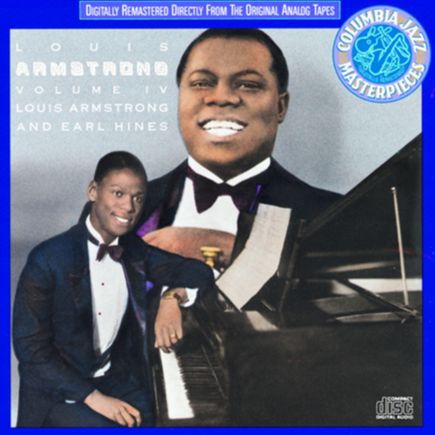Basin Street Blues: mémoire vivante de La Nouvelle-Orléans
Composé en 1926 par Spencer Williams, Basin Street Blues s’impose rapidement comme un standard emblématique du jazz dixieland. C’est l’interprétation magistrale de Louis Armstrong et ses Hot Five, enregistrée le 4 décembre 1928, qui en fait une œuvre fondatrice, marquant un jalon décisif dans l’évolution du jazz.
Le titre fait directement référence à Basin Street, artère centrale de Storyville – le légendaire quartier chaud du Vieux Carré français à La Nouvelle-Orléans. Cet espace bouillonnant de vie nocturne, de clubs animés et de maisons closes a vu naître les premières grandes figures du jazz, dont Armstrong lui-même et Jelly Roll Morton. Dans ce contexte, Basin Street Blues ne se limite pas à une chanson : elle incarne un pan entier de l’histoire culturelle américaine.
Sur le plan musical, la pièce brille par sa capacité à conjuguer expressivité et improvisation. Son thème principal, doux et mélancolique, est souvent confié à la trompette ou au cornet – instruments phares du jazz néo-orléanais – conférant à chaque interprétation une chaleur émotive particulière.
La postérité de Basin Street Blues est remarquable : au-delà des quelque cinquante enregistrements laissés par Armstrong, la chanson a été reprise des centaines de fois et figure dans la bande sonore de films aussi variés que The Glenn Miller Story (Anthony Mann), Casino (Martin Scorsese) ou The Curious Case of Benjamin Button (David Fincher).
Armstrong et Hines, entre tradition et invention
Le 4 décembre 1928, Louis Armstrong enregistre à New York une version de Basin Street Blues, publiée dans l’album The Louis Armstrong Collection – Vol. 4 – Louis Armstrong And Earl Hines, qui deviendra l’une des pierres angulaires du jazz classique. Cet enregistrement, réalisé avec le pianiste Earl Hines, marque un moment charnière où le jazz quitte son berceau néo-orléanais pour s’affirmer comme une forme artistique sophistiquée, portée par des solistes au talent visionnaire. Ils sont accompagnés par Mancy Carr (banjo), Jimmy Strong (clarinette et saxophone ténor), Fred Robinson (trombone) et Zutty Singleton (batterie).
La version de 1928 témoigne de l’entente exceptionnelle entre Armstrong et Hines, deux musiciens à l’écoute, chacun en pleine ascension. Armstrong y déploie toute la palette de son jeu : phrasé souple, timbre cuivré, invention mélodique, mais aussi cette capacité rare à faire swinguer chaque note, en insufflant une humanité tangible à chaque inflexion. Il chante et joue avec une liberté rythmique encore inédite à l’époque, transformant une mélodie populaire en expression personnelle.
Face à lui, Earl Hines n’est pas en reste. Son jeu pianistique, à la fois fluide, percussif et lyrique, s’émancipe des rôles d’accompagnement conventionnels. Il dialogue avec Armstrong, le relance, anticipe ses phrases, et crée un tissu harmonique et rythmique d’une modernité saisissante pour l’époque.
Basin Street Blues: memoria viva de Nueva Orleans
Compuesta en 1926 por Spencer Williams, Basin Street Blues se impone rápidamente como un estándar emblemático del jazz dixieland. La interpretación magistral de Louis Armstrong y sus Hot Five, grabada el 4 de diciembre de 1928, la convierte en una obra fundacional y en un hito clave en la evolución del jazz.
El título hace referencia directa a Basin Street, arteria central de Storyville —el legendario distrito rojo del Barrio Francés de Nueva Orleans—. Esta zona, vibrante de vida nocturna, clubes animados y casas de citas, fue el escenario donde surgieron algunas de las primeras grandes figuras del jazz, incluido el propio Armstrong, así como Jelly Roll Morton. En este contexto, Basin Street Blues no es solo una canción: encarna una parte fundamental de la historia cultural estadounidense.
Musicalmente, la pieza destaca por su capacidad de conjugar expresividad e improvisación. Su tema principal, suave y melancólico, suele interpretarse con trompeta o corneta —instrumentos emblemáticos del jazz de Nueva Orleans—, aportando a cada versión una calidez emocional particular.
La posteridad de Basin Street Blues es notable: más allá de los aproximadamente cincuenta registros realizados por Armstrong, la canción ha sido versionada cientos de veces y forma parte de la banda sonora de películas tan diversas como The Glenn Miller Story (Anthony Mann), Casino (Martin Scorsese) o The Curious Case of Benjamin Button (David Fincher).
Armstrong y Hines, entre tradición e invención
El 4 de diciembre de 1928, Louis Armstrong grabó en Nueva York una versión de Basin Street Blues, publicada más tarde en el álbum The Louis Armstrong Collection – Vol. 4 – Louis Armstrong And Earl Hines, que se convertiría en una de las piedras angulares del jazz clásico. Esta grabación, realizada junto al pianista Earl Hines, marca un momento clave en el que el jazz empieza a dejar su cuna en Nueva Orleans para afirmarse como una forma artística sofisticada, impulsada por solistas de talento visionario. Acompañan a Armstrong y Hines Mancy Carr (banjo), Jimmy Strong (clarinete y saxofón tenor), Fred Robinson (trombón) y Zutty Singleton (batería).
La versión de 1928 refleja la conexión excepcional entre Armstrong y Hines, dos músicos en plena ascensión, atentos el uno al otro. Armstrong despliega aquí toda su paleta expresiva: un fraseo fluido, un timbre brillante, una invención melódica constante y, sobre todo, esa rara habilidad para dar swing a cada nota, cargándola de una humanidad palpable. Su forma de cantar y tocar revela una libertad rítmica inédita para la época, transformando una melodía popular en una expresión profundamente personal.
Frente a él, Earl Hines brilla igualmente. Su estilo pianístico —fluido, percusivo y lírico a la vez— rompe con los roles tradicionales de acompañamiento. Dialoga con Armstrong, lo provoca, anticipa sus frases y construye una base armónica y rítmica de una modernidad sorprendente para el momento.
Basin Street Blues: memoria vivente di New Orleans
Composta nel 1926 da Spencer Williams, Basin Street Blues si afferma rapidamente come uno degli standard più rappresentativi del jazz dixieland. È l’interpretazione magistrale di Louis Armstrong e dei suoi Hot Five, incisa il 4 dicembre 1928, a consacrarla come un’opera fondativa e una tappa decisiva nell’evoluzione del jazz.
Il titolo fa riferimento diretto a Basin Street, arteria principale di Storyville — lo storico quartiere a luci rosse del Vieux Carré di New Orleans. Questo luogo, pulsante di vita notturna, club affollati e case di appuntamenti, fu la culla di alcune tra le prime grandi figure del jazz, come lo stesso Armstrong e Jelly Roll Morton. In questo contesto, Basin Street Blues non è solo una canzone: rappresenta un’intera pagina della storia culturale americana.
Dal punto di vista musicale, il brano si distingue per la sua capacità di unire espressività e improvvisazione. Il tema principale, dolce e malinconico, è spesso affidato alla tromba o al cornetto — strumenti simbolo del jazz di New Orleans —, conferendo a ogni interpretazione un’intensità emotiva particolare.
La fortuna di Basin Street Blues è eccezionale: oltre alla cinquantina di registrazioni lasciate da Armstrong, il brano è stato reinterpretato centinaia di volte e compare nelle colonne sonore di film molto diversi tra loro, come The Glenn Miller Story (Anthony Mann), Casino (Martin Scorsese) o The Curious Case of Benjamin Button (David Fincher).
Armstrong e Hines, tra tradizione e invenzione
Il 4 dicembre 1928 Louis Armstrong registra a New York una versione di Basin Street Blues, pubblicata successivamente nell’album The Louis Armstrong Collection – Vol. 4 – Louis Armstrong And Earl Hines, destinata a diventare una delle pietre miliari del jazz classico. Questa registrazione, realizzata con il pianista Earl Hines, segna un momento cruciale in cui il jazz abbandona le sue origini a New Orleans per affermarsi come forma d’arte sofisticata, sostenuta da solisti dal talento visionario. Li accompagnano Mancy Carr (banjo), Jimmy Strong (clarinetto e sassofono tenore), Fred Robinson (trombone) e Zutty Singleton (batteria).
La versione del 1928 testimonia l’intesa straordinaria tra Armstrong e Hines, due musicisti all’ascolto reciproco, entrambi all’apice di una crescita artistica travolgente. Armstrong dispiega tutta la sua gamma espressiva: fraseggio fluido, timbro squillante, inventiva melodica, ma soprattutto la capacità rara di far “swingare” ogni nota, imprimendo a ogni inflessione una profonda umanità. Canta e suona con una libertà ritmica ancora sconosciuta all’epoca, trasformando una melodia popolare in un’espressione autenticamente personale.
Di fronte a lui, Earl Hines non è da meno. Il suo stile pianistico — fluido, percussivo, lirico — si libera dai ruoli convenzionali di accompagnamento. Dialoga con Armstrong, lo stimola, anticipa le sue frasi e costruisce una trama armonica e ritmica di sorprendente modernità per quei tempi.
Basin Street Blues: a living memory of New Orleans
Composed in 1926 by Spencer Williams, Basin Street Blues quickly established itself as a defining standard of Dixieland jazz. It was the masterful rendition by Louis Armstrong and his Hot Five, recorded on December 4, 1928, that cemented its place as a foundational work and a decisive milestone in the evolution of jazz.
The title refers directly to Basin Street, the main artery of Storyville — the legendary red-light district in the French Quarter of New Orleans. This vibrant area, alive with nightlife, bustling clubs, and brothels, was the cradle of early jazz legends such as Armstrong himself and Jelly Roll Morton. In this context, Basin Street Blues is far more than a song: it stands as a vital chapter in American cultural history.
Musically, the piece is distinguished by its seamless blend of expressiveness and improvisation. Its main theme, gentle and melancholic, is often played on the trumpet or cornet — signature instruments of New Orleans jazz — bringing an emotional warmth to every performance.
The legacy of Basin Street Blues is remarkable: beyond the fifty or so recordings left by Armstrong, the song has been covered hundreds of times and appears in the soundtracks of films as diverse as The Glenn Miller Story (Anthony Mann), Casino (Martin Scorsese), and The Curious Case of Benjamin Button (David Fincher).
Armstrong and Hines, between tradition and invention
On December 4, 1928, Louis Armstrong recorded a version of Basin Street Blues in New York, later released on The Louis Armstrong Collection – Vol. 4 – Louis Armstrong And Earl Hines. This rendition would go on to become one of the cornerstones of classic jazz. Made in collaboration with pianist Earl Hines, the recording marks a turning point where jazz began to move beyond its New Orleans roots to establish itself as a sophisticated art form shaped by visionary soloists. They were joined by Mancy Carr (banjo), Jimmy Strong (clarinet and tenor saxophone), Fred Robinson (trombone), and Zutty Singleton (drums).
The 1928 version captures the remarkable musical connection between Armstrong and Hines — two artists deeply attuned to one another, both ascending rapidly in their careers. Armstrong displays the full range of his artistry: fluid phrasing, brilliant tone, melodic inventiveness, and above all, a rare ability to make each note swing, imbued with palpable human warmth. He sings and plays with a rhythmic freedom that was virtually unheard of at the time, transforming a popular tune into a deeply personal expression.
Opposite him, Earl Hines shines in equal measure. His piano playing — at once fluid, percussive, and lyrical — breaks free from conventional accompaniment roles. He engages in real dialogue with Armstrong, prompting, echoing, and anticipating him, weaving a harmonic and rhythmic texture that feels strikingly modern for its era.


